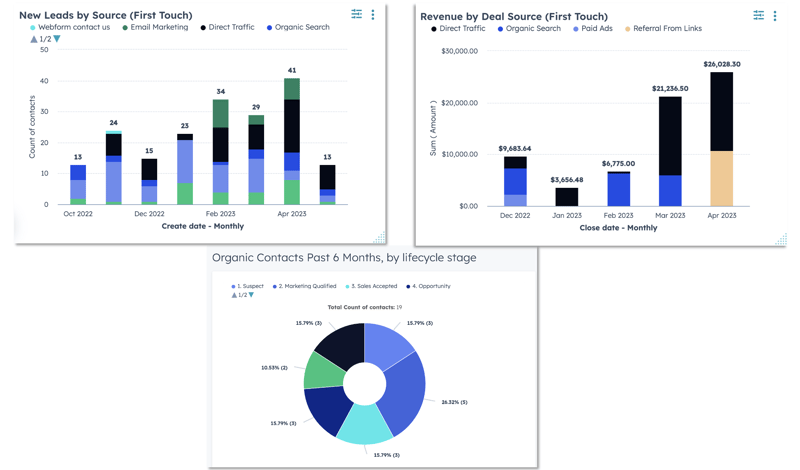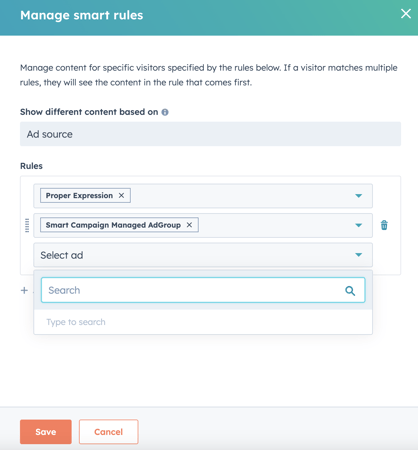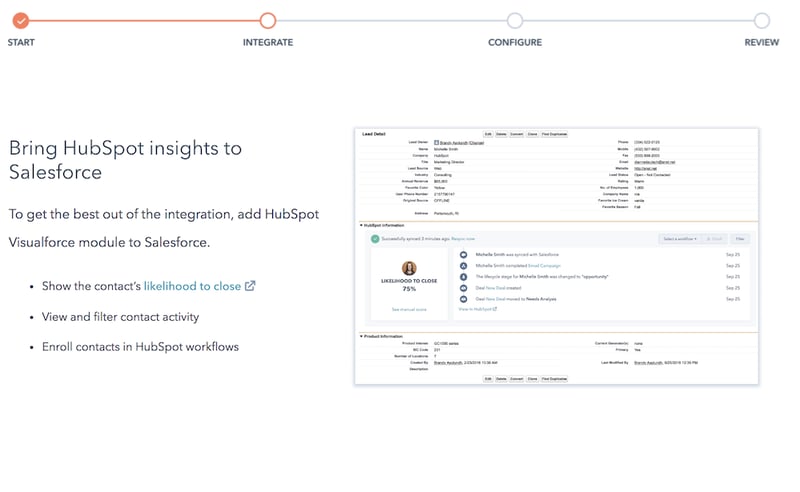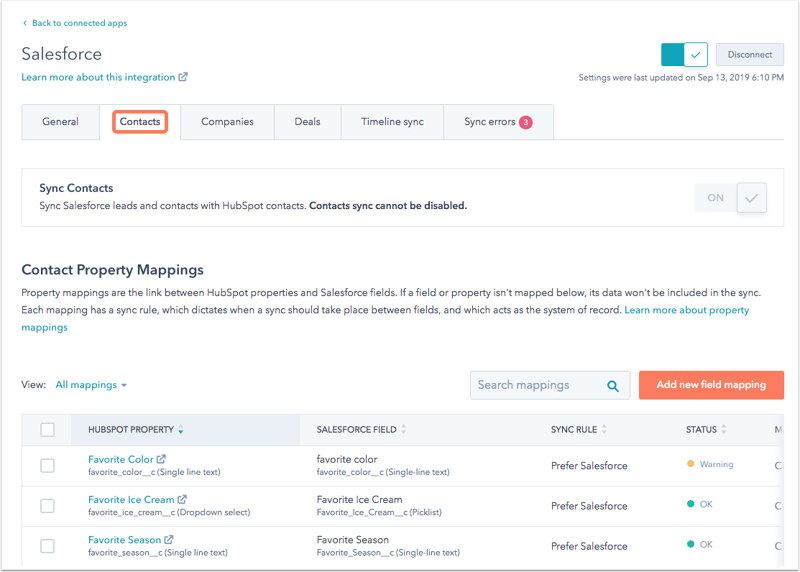Marketing is the largest business area that leverages automation technologies.
It’s no wonder that finding the right marketing automation platform is a top priority for marketing teams; it can make or break the success of a scaling business.
But with so many popular platforms out there, how can you choose the one that’s best for your business?
We’re comparing HubSpot and Pardot, two popular choices, based on four main categories:
- Automation & other features
- Integrations
- Reporting
- Speed & ease of use
Read on to explore how the software compares in each category and learn why HubSpot is the clear choice for streamlining your marketing and sales funnels and driving conversions.
HubSpot vs. Pardot: Automation & Other Features
HubSpot Automation
HubSpot offers a slew of unique automation and interactive features, including:
- Lead scoring: Assign different lead actions, demographic criteria and firmographic criteria a numerical value; once a lead reaches a specific score, they are automatically moved along in the funnel and enrolled in a nurturing workflow. This encourages timely engagement with leads who are primed to convert.
- Smart content: Automatically personalize landing pages and website content based on audience segments so that you can get conversion rates three-to-four times the industry average.
- Landing pages: Create user-friendly landing pages easily using HubSpot’s templates, rather than having to code from scratch like with other tools.
- Personalized follow-up: Increase close rates with playbooks, email nurturing, lead scoring and smart content that allows you to follow up with the right leads first.
- Marketing & sales alignment: Optimize the funnel and reduce bottlenecks with features that seamlessly push leads toward sales meetings and, eventually, to customer status.
- ABM tools: Target high-value accounts using qualification features, analytics, and other ABM-specific features.
Pardot Automation
Pardot lacks the level of in-depth customization needed in nurturing workflows and other automation. Not all workflows are created equal, and HubSpot allows for detailed customization based on audience segment, funnel stage, and other criteria, while Pardot takes a more templated approach to basic workflows and automation.
Lead scoring within Pardot is possible; however, setting it up requires a lot of manual work and the capabilities are not as extensive as what is available through HubSpot.
Additionally, Pardot landing pages lack advanced functionalities critical to success, including smart content, dynamic text replacement (DTR) for ads, and in-depth tracking and analytics.
|
Verdict: HubSpot! The software’s unbeatable capabilities that can be used as-in or customized make running campaigns from end-to-end a breeze, and it’s the clear winner when it comes to built-in features. |
HubSpot vs. Pardot: Tracking, Reporting, and Analytics
HubSpot Reporting
HubSpot enables you to track leads from their very first visit to the revenue they generate, so you gain visibility on the path to conversion and can optimize activities and budgets accordingly.
You’ll also be able to:
- Track conversion data, including sales meetings and closed deals per campaign
- Keep your data organized and clean with RevOps tools
- Assess the effectiveness of your investment by reporting on which channels are driving the most revenue, deals, and leads
- Create custom reports or use HubSpot’s templates for flexible, comprehensive analytics without any add-ons necessary
- Report on the entire funnel and on how specific campaigns influence revenue
For example, in HubSpot you can set up custom reports that cover top to bottom of funnel metrics and leverage a variety of attribution models:
- Number of new contacts created by source (organic search, direct traffic, paid search, etc.)
- Number of new demo requests by source (first and/or last touch)
- Amount of new pipeline by source (first and/or last touch)
- Number of new closed won deals and revenue by source (first and/or last touch)
With advanced custom reporting, your marketing and sales teams have increased visibility into the activities that are making the most impact on the bottom line. You can clearly identify trends in which channels are bringing in the most leads and the leads that convert into pipeline and revenue, and which channels are most effective in turning leads in the database into viable and valuable opportunities.

Pardot Reporting
The reporting features for Pardot:
- Lack revenue attribution and channel reporting
- Don’t automatically capture lead sources in reporting, making it difficult to understand which channels are bringing in the most and best quality leads
- Lack sales funnel tracking, leading to limited visibility into the quality of your leads
Without clear reporting, determining what efforts are working and should be emphasized and what efforts are failing and need to be reworked is not possible. Growth marketing can’t happen without reporting.

|
Verdict: HubSpot! Pardot’s weak reporting capabilities don’t measure up to HubSpot’s customizable, intuitive dashboards that allow you to track data at every stage of the buyer’s journey. |
HubSpot vs. Pardot: Tech Stack Integrations
HubSpot Integrations
HubSpot offers simple integrations in their marketplace, so no JSON or development is needed. The platform enables your sellers to get essential information at their fingertips directly in their customer relationship management (CRM), even if their CRM is Salesforce.com (SFDC).
In fact, the integration between HubSpot and SFDC is better than the one between Pardot and SFDC; HubSpot is heavily invested in providing an intuitive, easy-to-configure integration that you can quickly troubleshoot. With the HubSpot and SFDC integration, the two systems work together seamlessly to provide marketing and sales teams with excellent visibility into the progression of all leads.
Pardot Integrations
Pardot is limited in terms of integrations with other platforms. It requires manual connection and integrations to your Sales tools, such as Salesforce. This often leads to incomplete and missing data, making it challenging to achieve marketing and sales alignment and reduce funnel bottlenecks without significant effort.
|
Verdict: HubSpot! With so many integration options that don’t have to be done manually, you can create a cohesive tech stack with minimal effort compared to Pardot. |
HubSpot vs. Pardot: Ease and Speed of Usage
HubSpot Ease of Use
Learning and using HubSpot is fast. Users can train in HubSpot Academy (and gain marketing hub, sales hub, and other certifications as well as knowledge in key concepts like RevOps), contact 24/7 support via chat or phone, and explore the extensive knowledge base for self-help articles on troubleshooting or system questions.
Plus, HubSpot’s interface is user-friendly and intuitive, so it takes very little time to understand the platform and execute campaigns within it.
Pardot Ease of Use
Customizing your Pardot instance and nurturing leads quickly is a heavy lift and often requires a consultant or external resources who are well-versed in Pardot. Additionally, Pardot’s user interface is clunky and disconnected, requiring a steep learning curve for new users compared to HubSpot. Pardot’s support also pales in comparison with HubSpot support, so it takes more time to troubleshoot potential issues.
| Verdict: HubSpot! HubSpot has famously helpful support and training and is intuitive enough to learn on your own quickly. Pardot’s inferior user interface and lack of 24/7 effective support put it in a clear second place. |
HubSpot in Action: Advertising
Now that you’ve seen how HubSpot’s automation, reporting, integrations, and learning curve work compared to Pardot, it’s time to get practical. We’re showing how you can use these features to make the most of your ad campaigns and drive a high return on ad spend (ROAS).
 Smart content: When someone clicks on your ad, they’ll be directed to a landing page. Use smart content to match the heading on the landing page to the actual keyword of the ad to give your lead a consistent experience every step of the way and to increase conversion rates.
Smart content: When someone clicks on your ad, they’ll be directed to a landing page. Use smart content to match the heading on the landing page to the actual keyword of the ad to give your lead a consistent experience every step of the way and to increase conversion rates.- Landing page templates: Create unique advertising landing pages for each ad campaign using HubSpot’s easy-to-use templates and drag-and-drop interface.
- Lead tracking: By tracking leads from their first visit, you can understand which ads and which keywords your qualified leads came from. This lets you optimize your budget around the keywords and campaigns that turn leads into revenue, and campaign-specific reporting dashboards make analyzing leads simple.
- Lead scoring: You can give a certain score to people who click on an ad or follow the CTA on a landing page, which automatically updates them in your database and moves them along the funnel.
Keep in mind: this is just one example! Leveraging HubSpot empowers you to create conversion-optimized campaigns across all channels that are designed to positively impact your bottom line.
HubSpot vs. Pardot: The Conclusion
While Pardot is the default choice of many B2B companies, it has numerous limitations compared to HubSpot that make customization, personalization, and automation difficult.
HubSpot is not just a marketing tool. It’s a full-service machine that enables you to lower your cost per lead and maximize your ROI. With its pricing tiers, robust automation, and innovative customization, other marketing platforms don’t come close to HubSpot in terms of streamlining the funnel and executing campaigns that drive revenue and growth.
Want to Know More?
We’re a HubSpot partner agency that specializes in Pardot-to-HubSpot migrations. Get in touch if you have any questions and are interested in having a new, powerful HubSpot instance in under 90 days.









